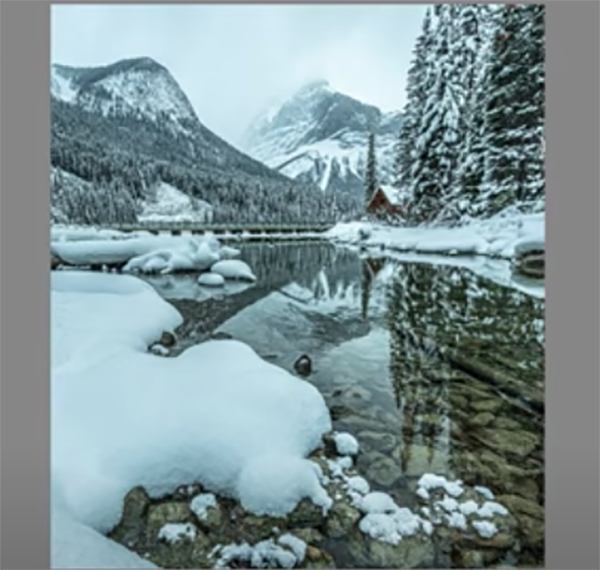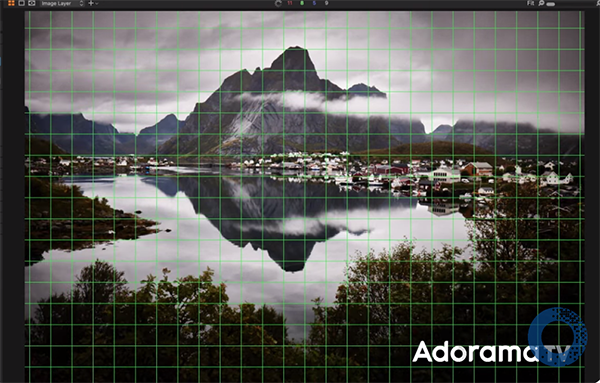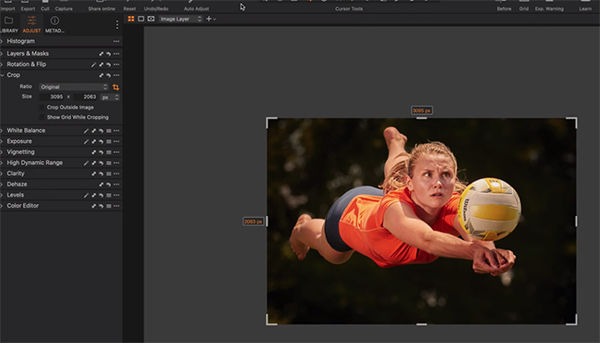Social media is raving about this lazy oven cleaning hack – but experts warn against trying it yourself
Experts warn against this viral oven cleaning hack using a dishwasher tablet
If you’re struggling to capture impressive images of beautiful winter landscape scenes, you’ve come to the right place. The following video from the Light Meets Lens YouTube channel reveals a three-step Lightroom process that will bring out the beauty of what you saw through the viewfinder.
Instructor Nick Kuhn is known for behind-the-scenes tutorials of the Canadian landscape. In this episode he admits that he also had problems with winter landscapes until he developed the straightforward Lightroom workflow that you’ll learn today.
He also sympathizes with the challenges of shooting in winter, explaining that one big problem occurs when the frame includes bright white snow and dark wet areas that can create far too much contrast in your results. These same variables often make post-processing complicated as well—unless you follow Kuhn’s easy-to-follow Kuhn advice that takes him less that 10 minutes to explain.

Kuhns says his goal conveying the enchanting essence of winter involves capturing crisp, rich, detailed, images with accurate contrast and any vibrant colors that appear in a scene. You’ll watch him edit five winter shots and compare them to a handful of photos captured in summer.
By examining the edits you’ll quickly understand the challenges posed by winter and how to resolve them effectively. His first observation when reviewing the winter shots is “just how white the snow is, and just how dark everything else is.” Hence the problem with contrast.
Take a look at Kuhn’s first image and you’ll see that almost all details are lost in a stand of trees behind the snowfield in the foreground. In another example it’s quickly apparent that the camera “totally got the White Balance wrong.” The other winter images he presents have different but equally objectional problems—especially when compared to the photos he shot in summer.

By following Kuhn’s three-step process, while paying close attention to Lightroom’s histogram, you’ll be able to solve just about any issues you confront. After demonstrating the workflow he used for all five winter photos, Kuhn then patiently reviews each of the edits and describes the power of his straightforward technique for every shot.
As you’ll see, it’s a simple method that will enable you to transform ho-hum photographs into stunning winter photographs that really grab attention. So load of a few of your earlier “acceptable” shots into Lightroom, transform them with the techniques you just learned, and you’ll never settle for acceptable again.
There much more to learn on Kuhn’s instructional YouTube channel and in an earlier tutorial we posted, explaining eight unfamiliar Lightroom techniques that will make a big difference in every photograph you shoot in the field.
Have you ever wondered why your images don’t quite compare to those shot by photographers who make their living behind the camera? Sure, high-end gear and years of experience are important, but today’s video from the Adorama TV YouTube channel lets you in on a secret you can start using today and it won’t cost you a dime.
Instructor David Bergman is an accomplished NY pro specializing in celebrity portraits and sport photography. He also has an informative website where he answers common photography questions and you can even submit queries of your own.
Bergman kicks off today’s episode with this: “There are a couple things that pro photographers do to make our images feel more polished. What he’s referring to here is carefully straightening and cropping photos to add an impactful finishing touch. At first these simple steps may seem inconsequential—until you hear what Bergman has to say and watch how he gets the job done.

Straightening is first on Bergman’s list and he introduces the topic with a problem you may have noticed in your landscape photos, in which the horizon line isn’t perfectly parallel to the top and bottom of the frame. Resolving this is super simple and you’ll be surprised by how much this quick fix improves the appearance of an image.
Just take a look at the dramatic photo Bergman captured in the Norway’s Lofoton Islands. It looks pretty great until you examine it closely and realize that the horizon is slightly skewed, i.e. leaning to the left. Many of us might be satisfied with the original photo—until you see how Bergman straightens it out and compare the final shot to the one he made in the camera.
Bergman uses Capture One for all his post processing, but you can use his straightening method in Lightroom, Photoshop, and just about any other image editor you may own. Bergman reveals that, “I do this with almost every image I shoot” including the outdoor sports portrait he uses as another example.

The second task that’s just as important as straightening is cropping. Bergman admits that “there are some purists out there who want to shoot there images just right and not do any cropping in post, but I’m not one of those people.”
That because cropping will often significantly improve a photo—especially when photographing sports and other events with fast action, and you don’t have time for perfect composition while capturing the decisive moment. Here again, Bergman has some simple tips that he illustrates with eye-catching examples.
You can find more valuable videos by paying a quick visit to the Adorama TV YouTube channel, so be sure to do that. And don’t forget to check out Bergman’s popular website.
